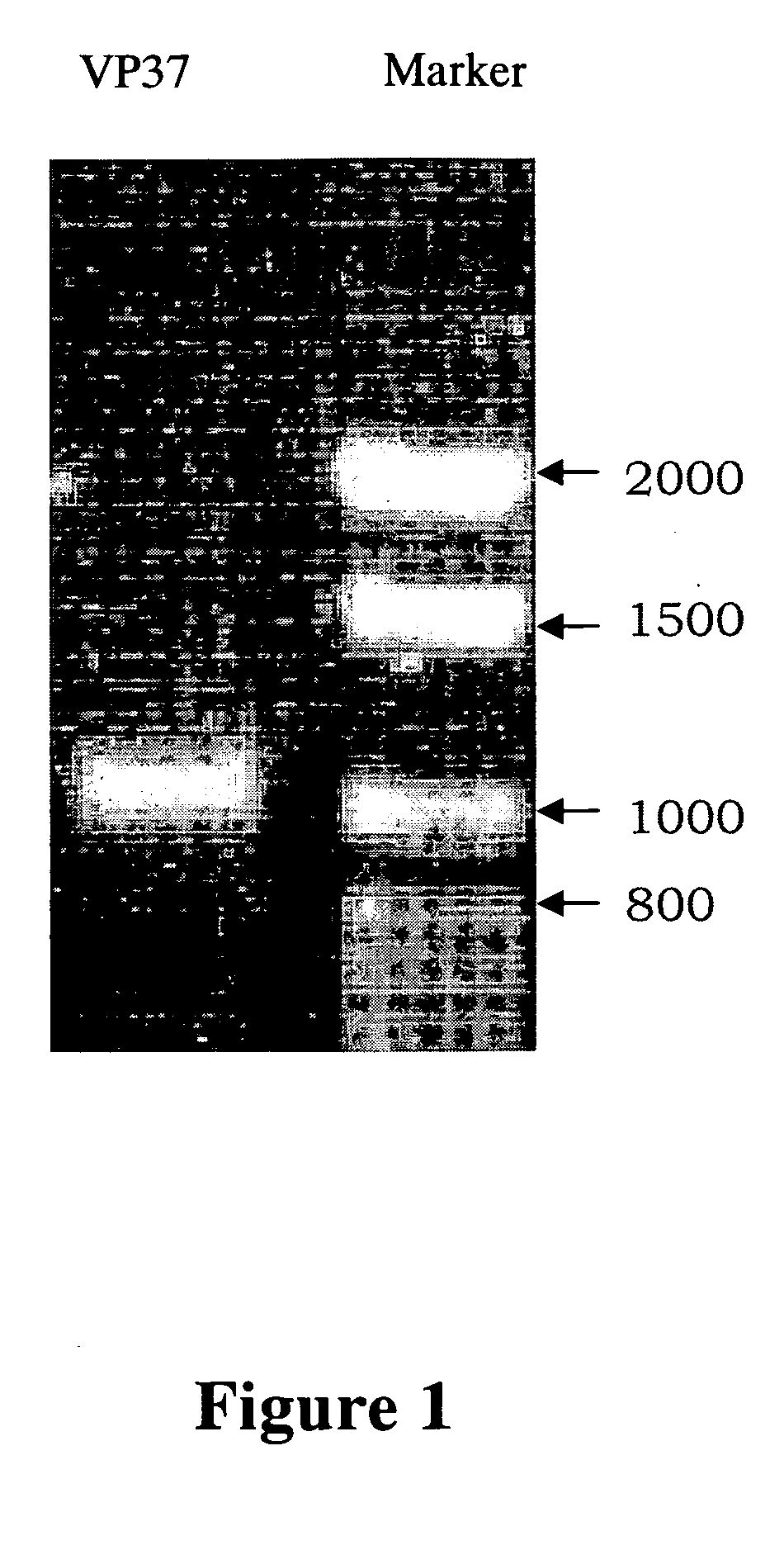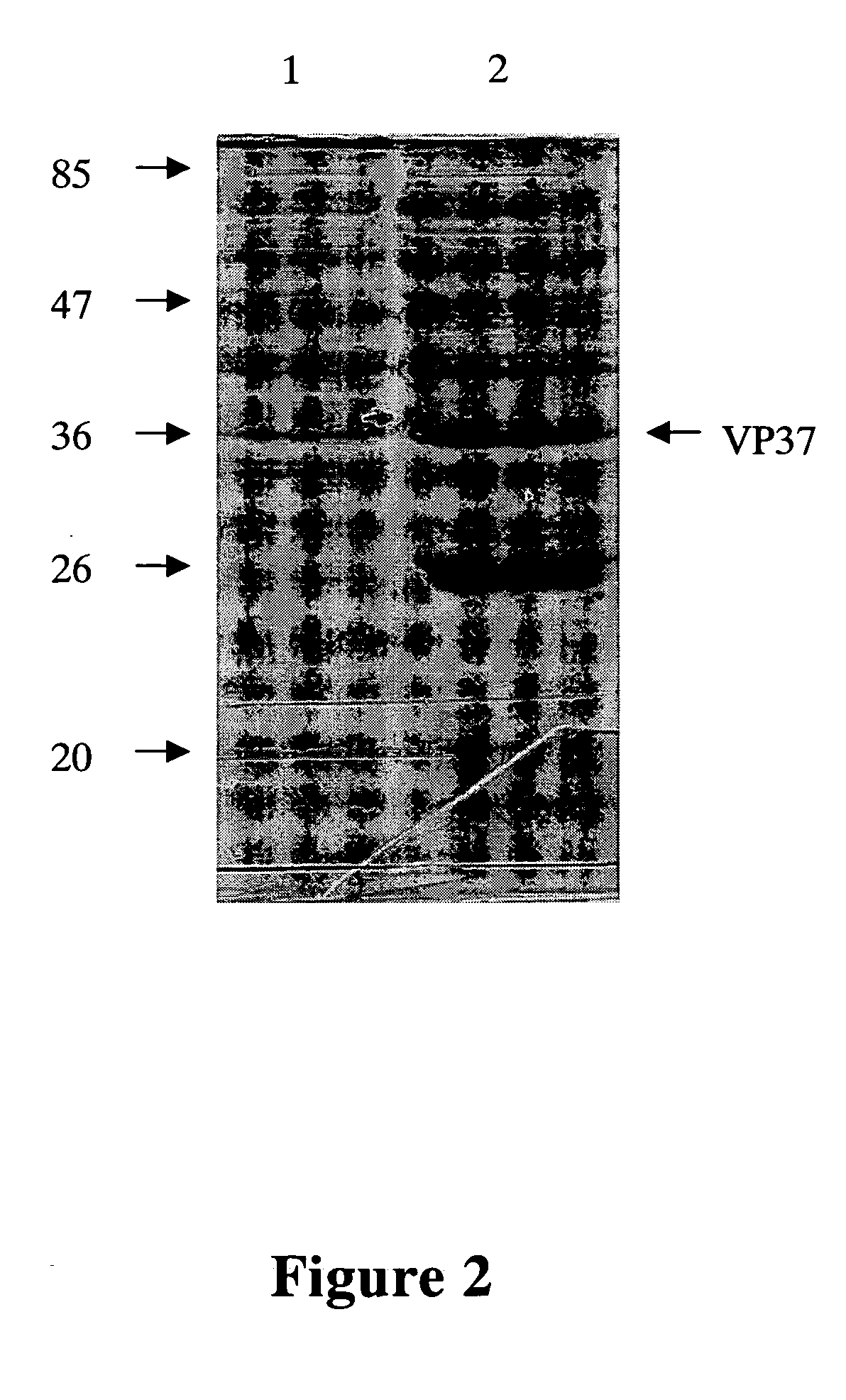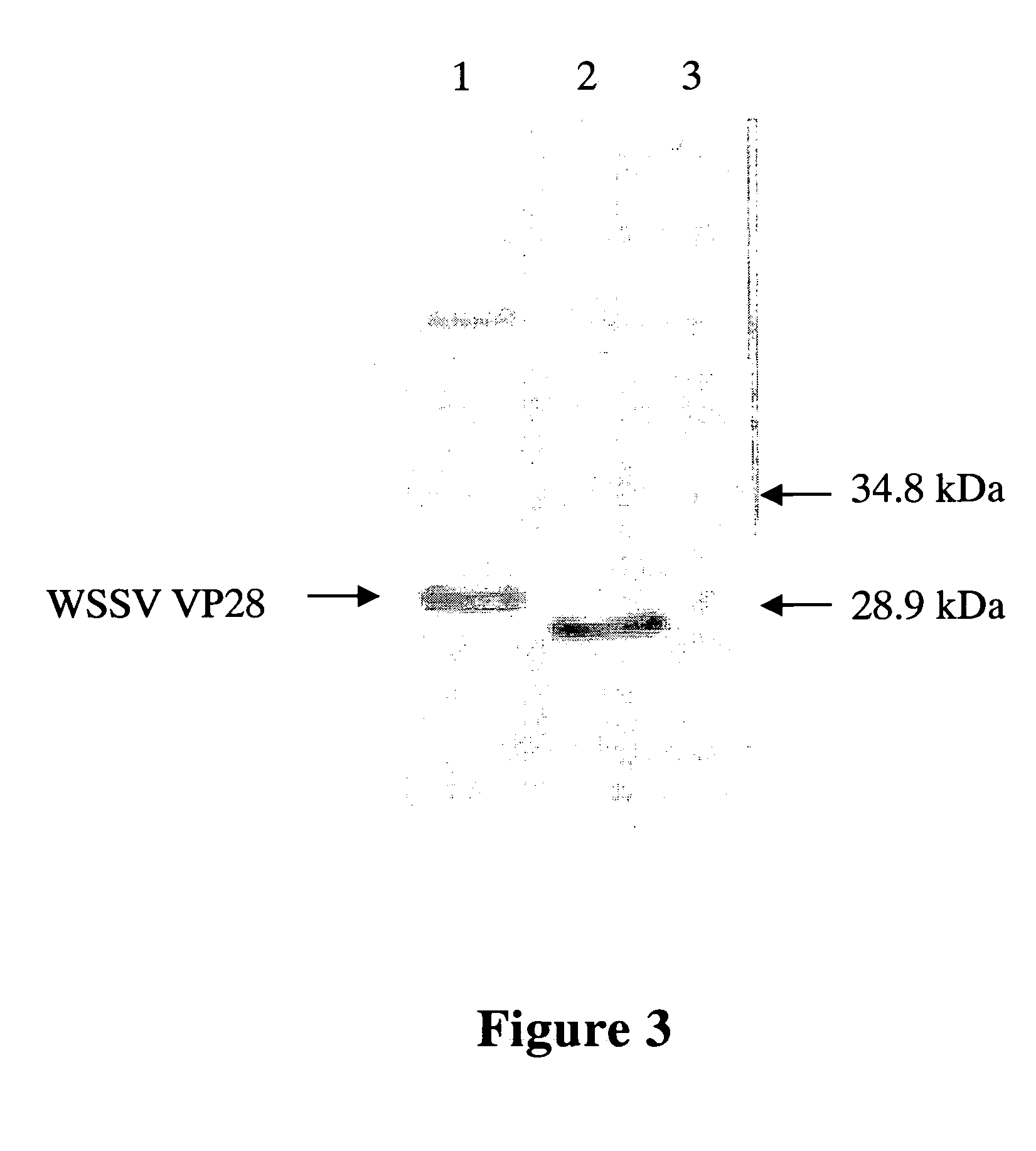Compositions for reducing virus infection rate in aquatic crustaceans and applications thereof
a technology of crustaceans and compositions, applied in the field of compositions and methods for reducing the virus infection rate of aquatic crustaceans, can solve the problems of rapid and uncontrollable viral spread, no effective treatment, dramatic reduction of shrimp production to global hatchery managers, etc., to improve the ability of treatment and/or prevention of viral infection, increase the survival rate of shrimp, and resist effectively
- Summary
- Abstract
- Description
- Claims
- Application Information
AI Technical Summary
Benefits of technology
Problems solved by technology
Method used
Image
Examples
example 1
(1) Preparation of White Spot Syndrome Virus (WSSV) Antigen
[0059] The liver, pancreas and skin are collected and ground after WSSV infected tiger shrimps (Penaeus monodon) are anatomized, which are filtered through a 0.45 μm filter to remove the impurities, followed by ultracentrifugation in a CsCl density gradient (the gradient contains a gradient of 20%, 30%, and 40% CsCl resuspended in 1×TNE buffer containing 20 mM Tris Base, 400 mM NaCl, 5 mM EDTA, pH 7.4) at 39,000 rpm, 4° C. for 18 hours to collect the WSSV viral particles.
[0060] The WSSV solution is digested with proteinase K (100 μg / ml) and one-tenth volume of lysis buffer (100 mM Tris-HCl, pH 8.0, 100 mM EDTA, 2.5% SDS), which are incubated at 55° C. for 24 hours. The DNA of WSSV is obtained after phenol chloroform extraction.
[0061] And then the known method of polymerase chain reaction (PCR) is performed to amplify the DNA of envelope protein VP28 of WSSV (SEQ ID NO: 1). The DNA of envelope protein VP28 of WSSV compris...
example 2
Titration of Monoclonal Antibodies from Culture Media of Hybridoma Cells
[0077] The culture media of monoclonal antibody against WSSV VP-28 antigen protein (termed HTWC thereafter) are diluted in the ratio of 1×10−2, 2×10−2, 1×10−3, 2×10−3 and 1×10−4 and analyzed with Western blot analysis to confirm the specificity and titer of monoclonal antibody obtained from Example 1.
[0078] Protein samples are transferred to nylon membrane after SDS-PAGE analysis in a semi-dry blotter (Panther™ Semidry Electroblotter) at 120 mA for 70 min. The membrane is placed in a blocking buffer (5% non-fat milk powder in TBST (20 mM Tris-HCl, 150 mM NaCl, and 0.05% Tween-20)) for one hour, washed with 25 ml of TBST for 5 min and incubated with 5 ml of blocking buffer containing primary antibody for 2 hours at room temperature. After hybridization, the membrane is washed with 25 ml of TBST for 5 min and incubated with 5 ml of blocking buffer containing secondary antibody for 1 hour at room temperature. The...
example 3
[0080] Tiger shrimps (Penaeus monodon) each in size of 2.9±0.3 cm, and average weighing approximately of 0.16 g are divided into 3 groups with 15 shrimps in each group. The seawater salinity of the culture pond is adjusted to 16 ppt (1.6%). Each group of shrimps is put into a culture tank with 2 L of seawater and cultivated overnight to accommodate new environment. The extracts of WSSV infected shrimps; monoclonal antibodies against WSSV (HTWC) and TNE buffer are mixed respectively (test solution) for soaking feed diets as indicated in the following Table.
Extract of InfectedMonoclonalShrimpsAntibodyTNE BufferGroup 1125 μl125 μlGroup 2125 μl125 μlGroup 3125 μl125 μl
[0081] The test solution is mixed thoroughly and stayed at room temperature (around 23-25° C.) for one hour. 0.1 gram of feed diet is added into reacted test solution, mixed and stayed for another hour to absorb test solution.
[0082] The water level is adjusted to 0.5 L and the tiger shrimps are hungered for 12 hours bef...
PUM
| Property | Measurement | Unit |
|---|---|---|
| Composition | aaaaa | aaaaa |
| Antigenicity | aaaaa | aaaaa |
Abstract
Description
Claims
Application Information
 Login to View More
Login to View More - R&D
- Intellectual Property
- Life Sciences
- Materials
- Tech Scout
- Unparalleled Data Quality
- Higher Quality Content
- 60% Fewer Hallucinations
Browse by: Latest US Patents, China's latest patents, Technical Efficacy Thesaurus, Application Domain, Technology Topic, Popular Technical Reports.
© 2025 PatSnap. All rights reserved.Legal|Privacy policy|Modern Slavery Act Transparency Statement|Sitemap|About US| Contact US: help@patsnap.com



